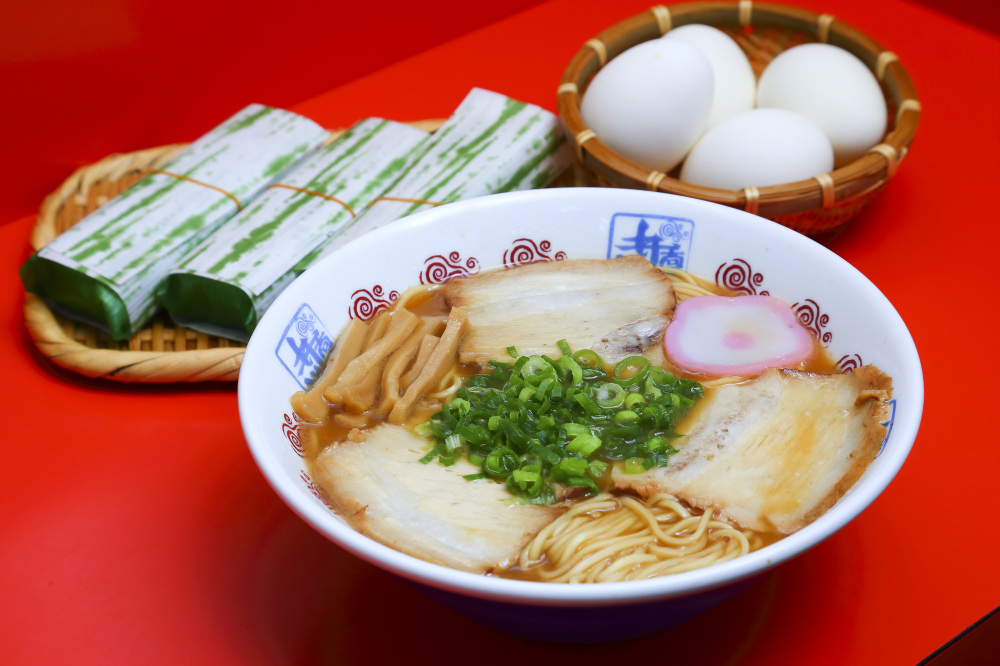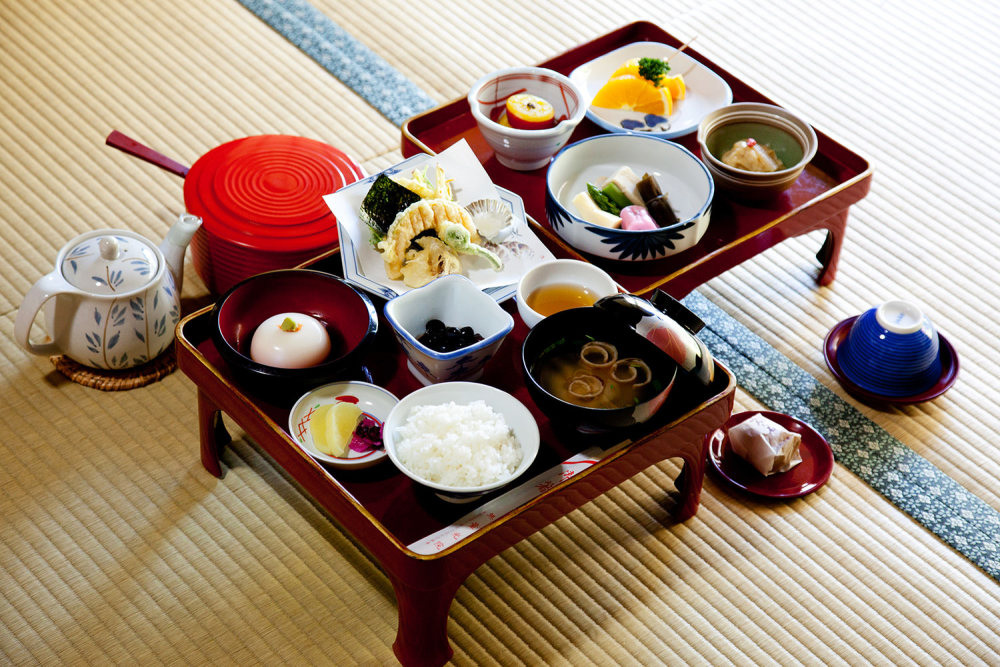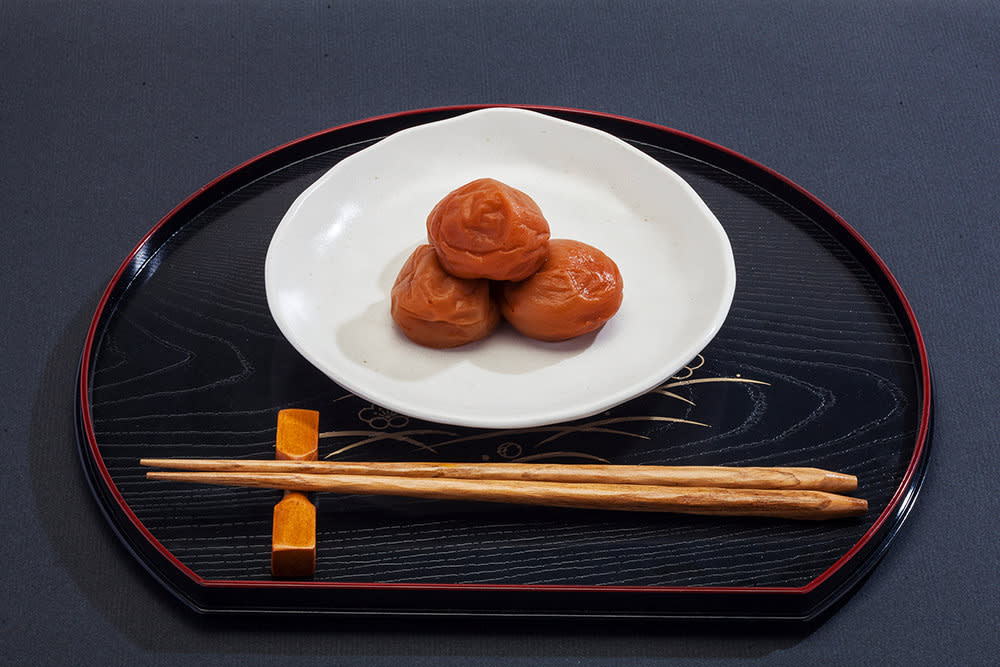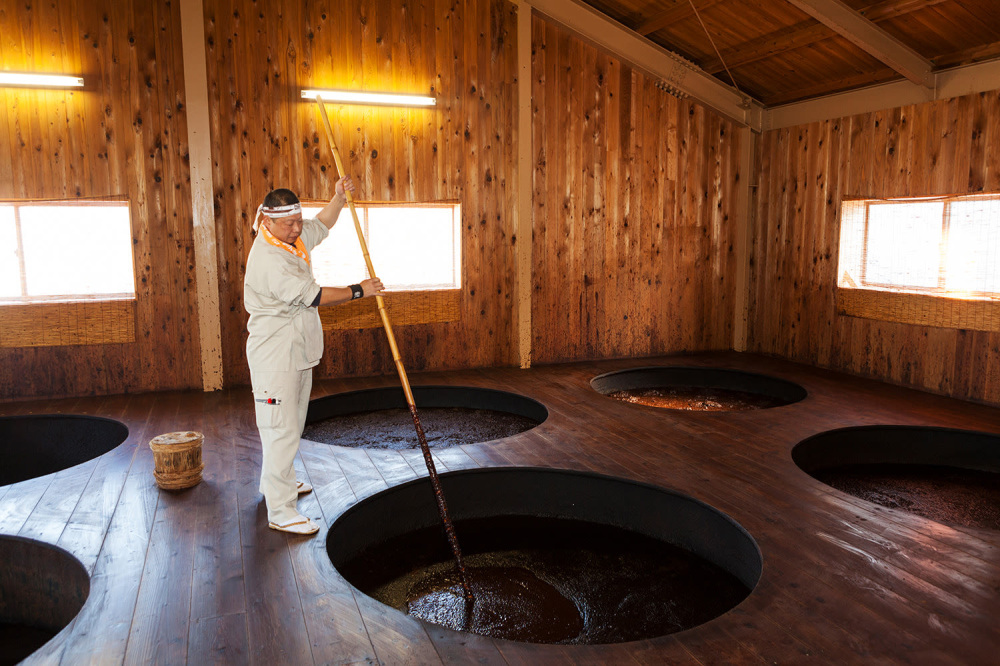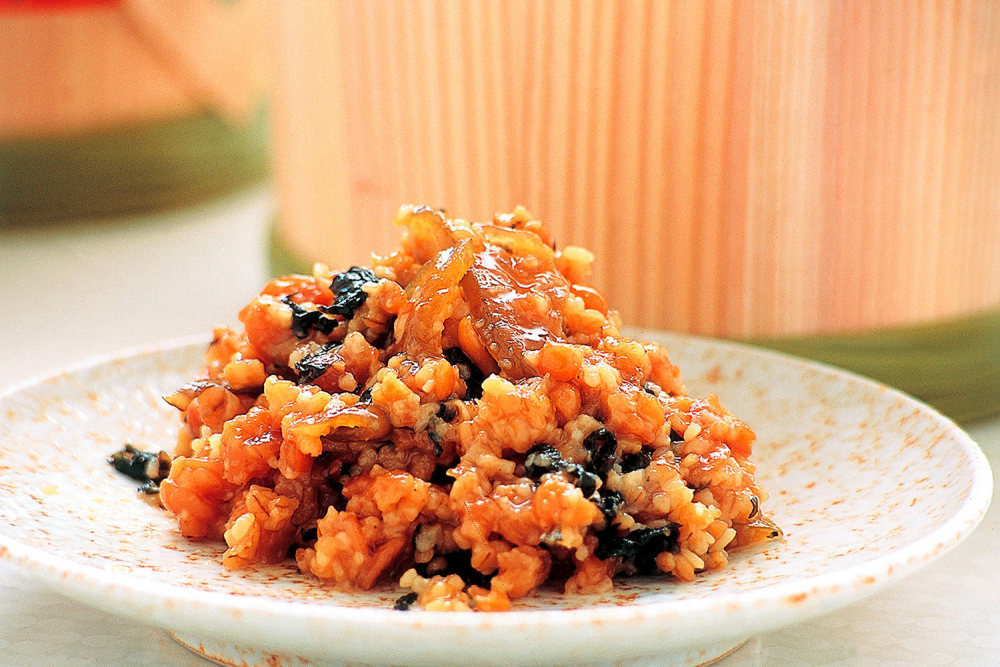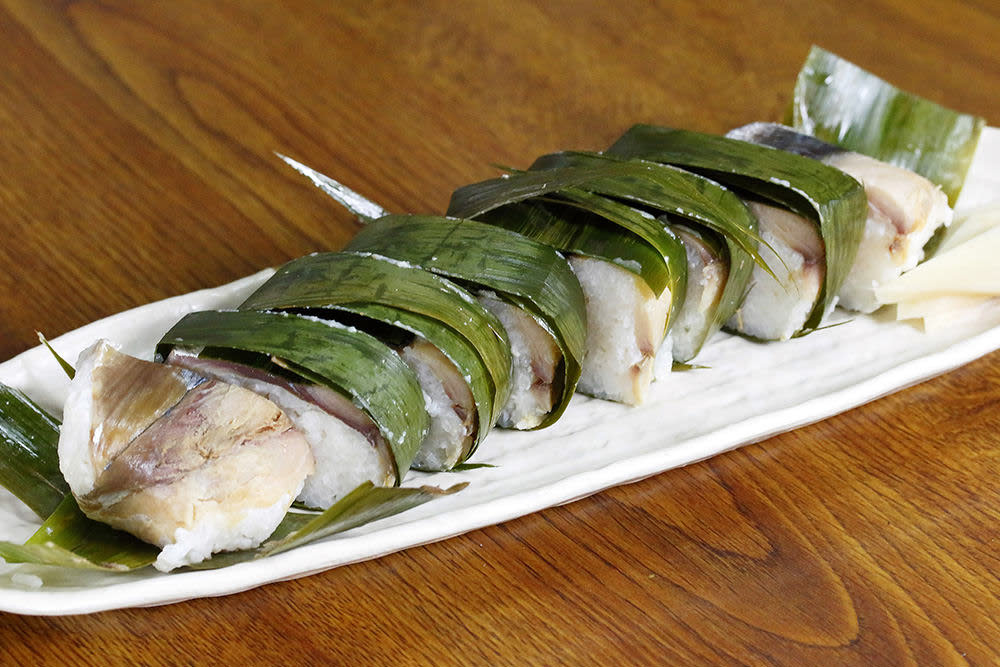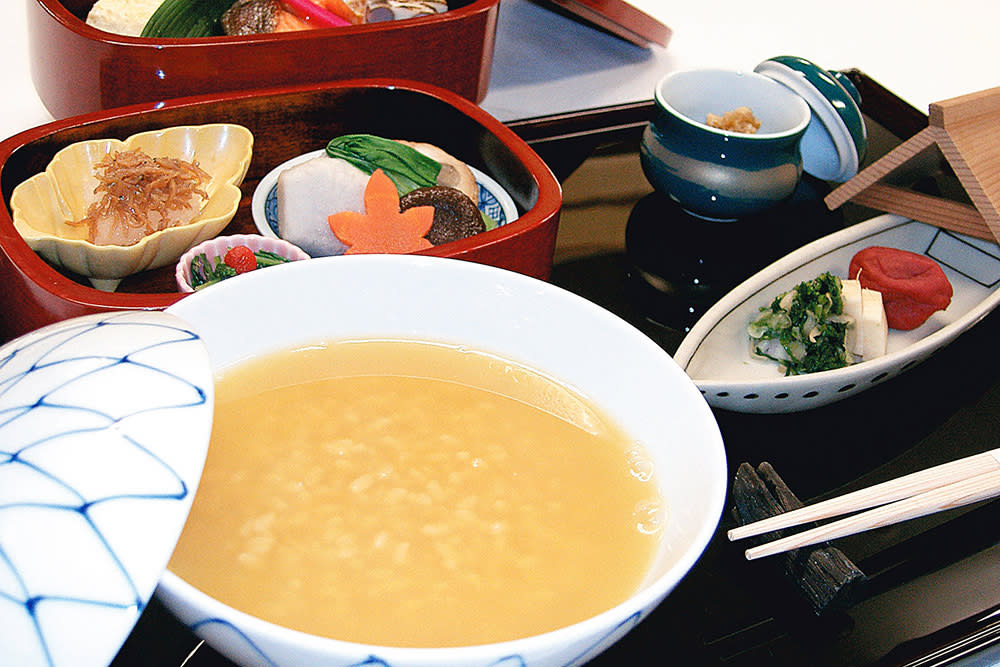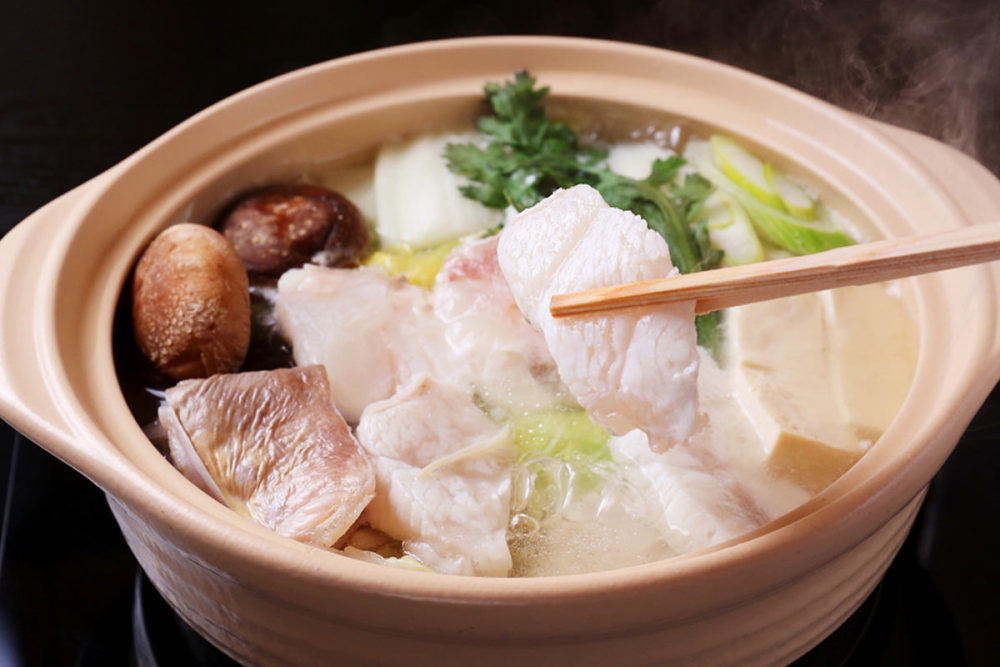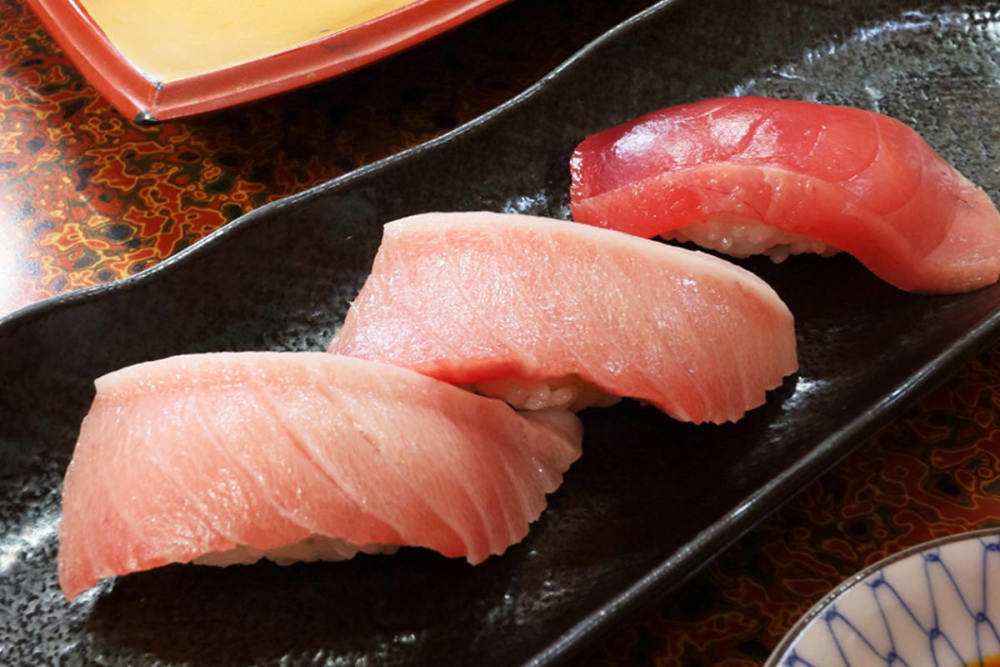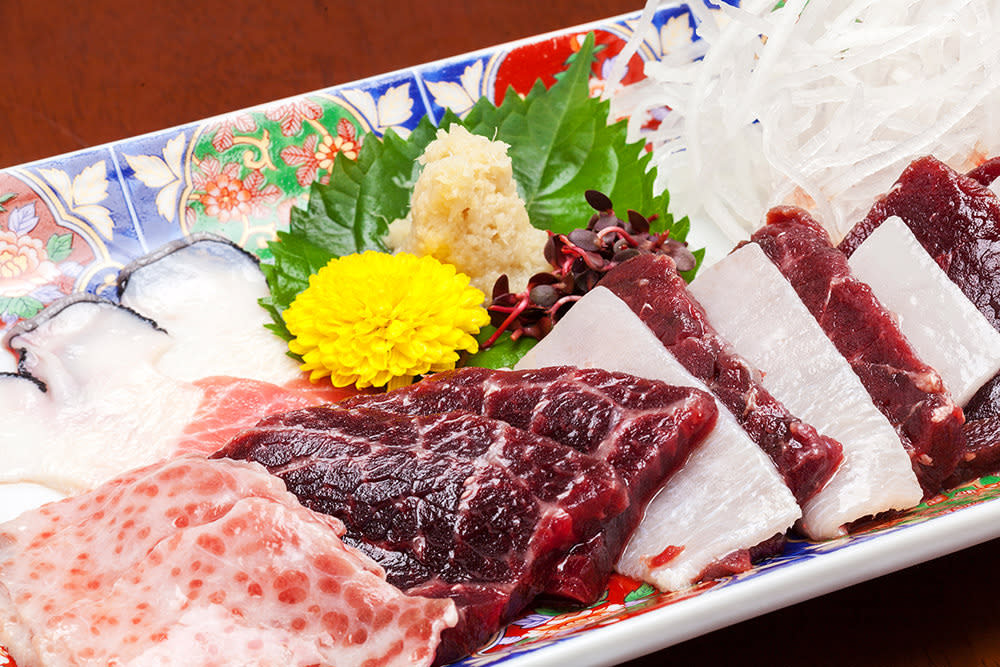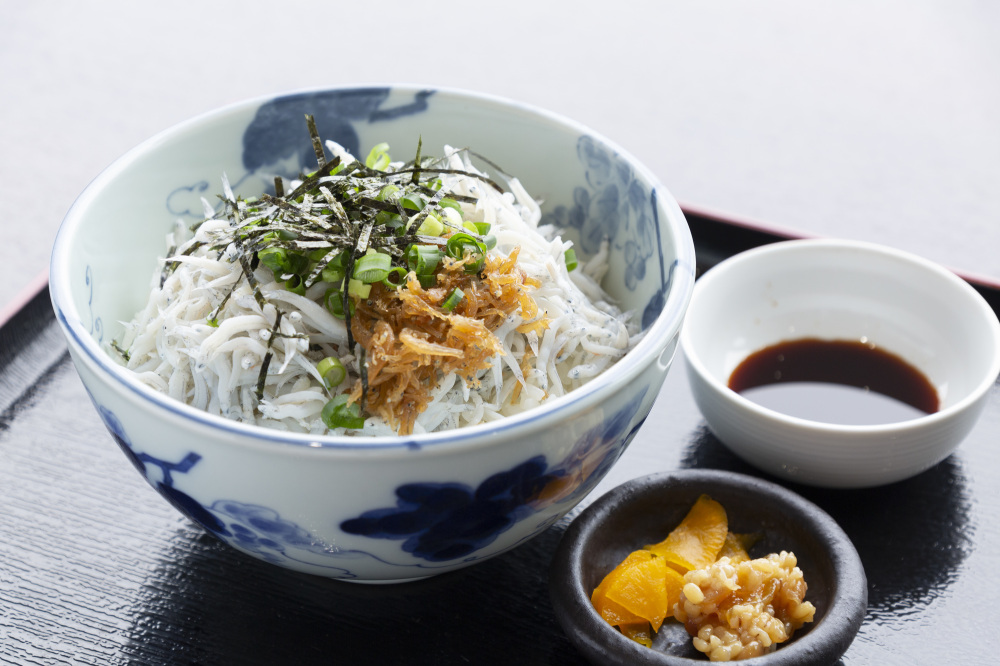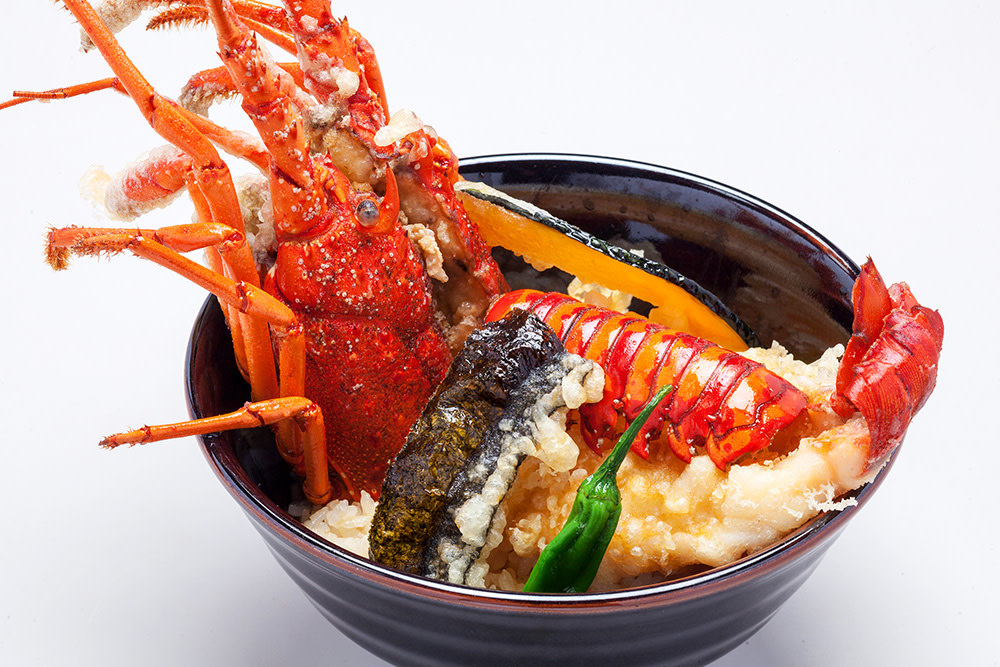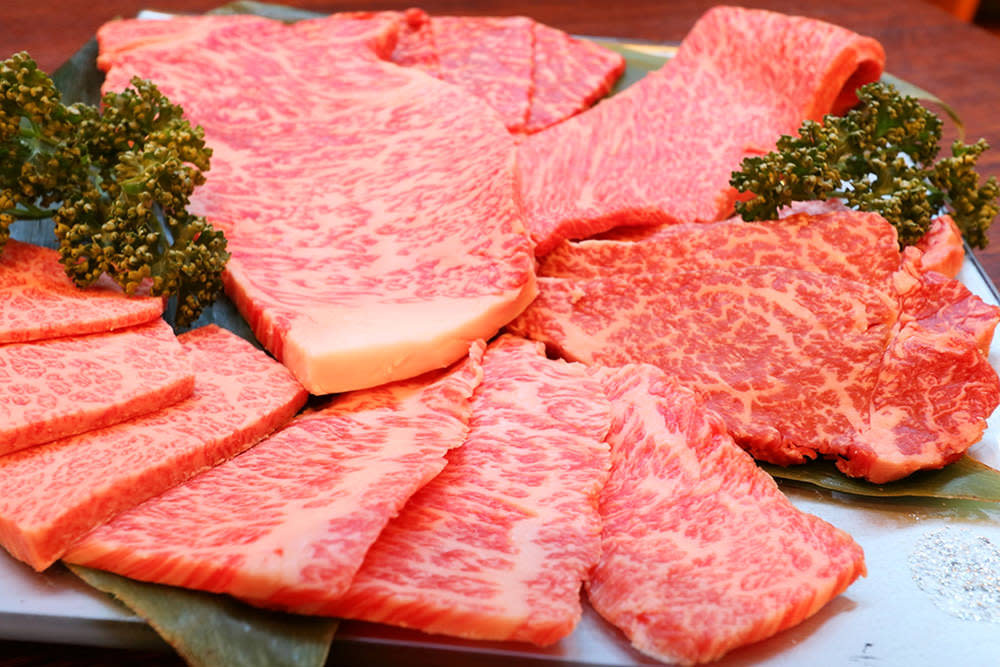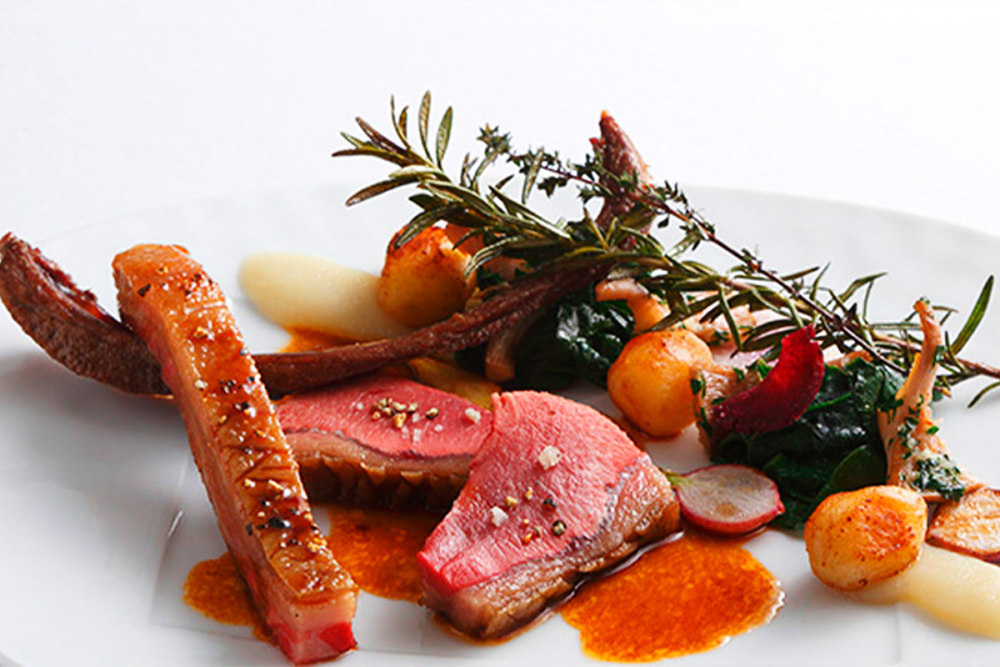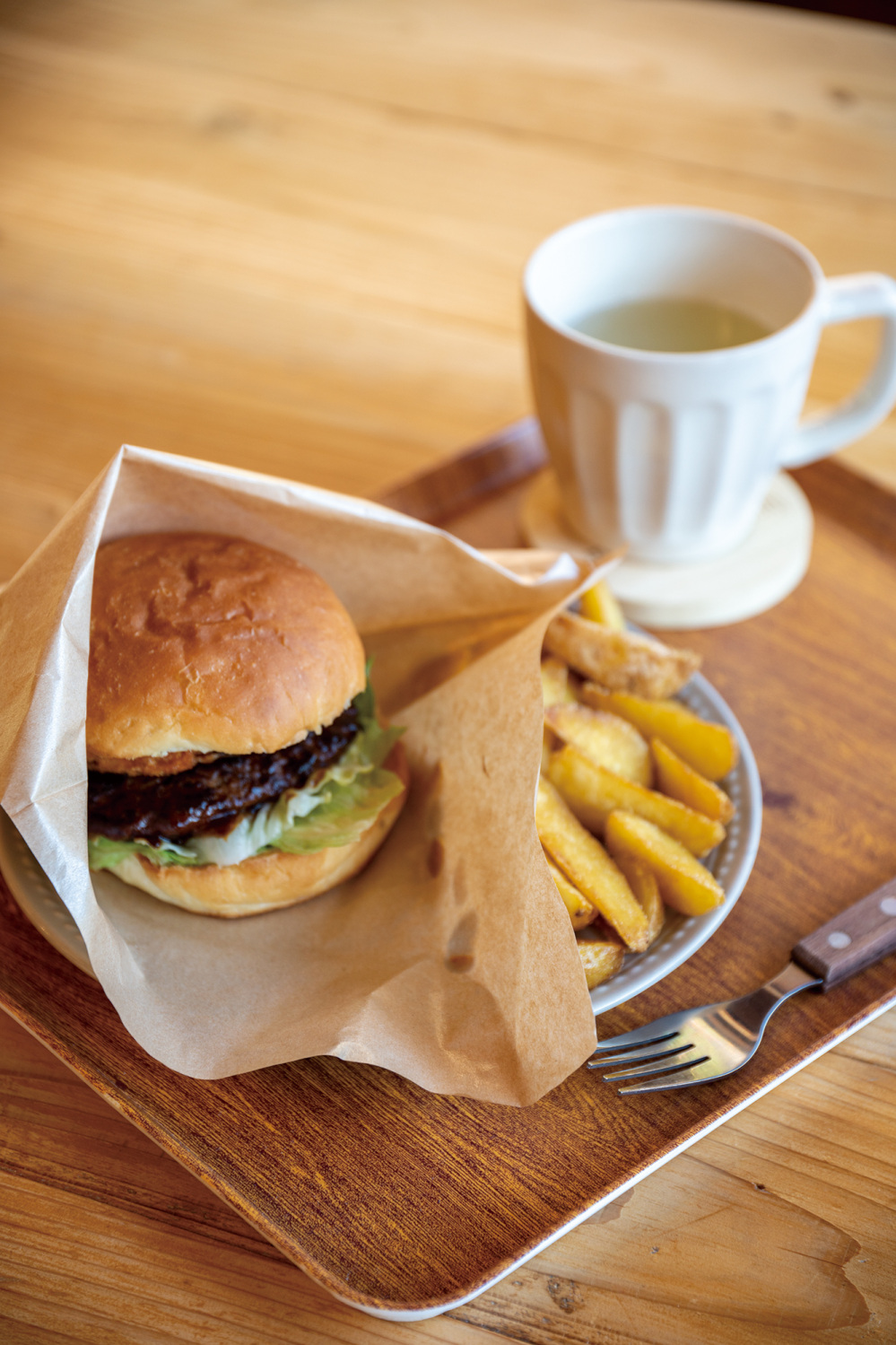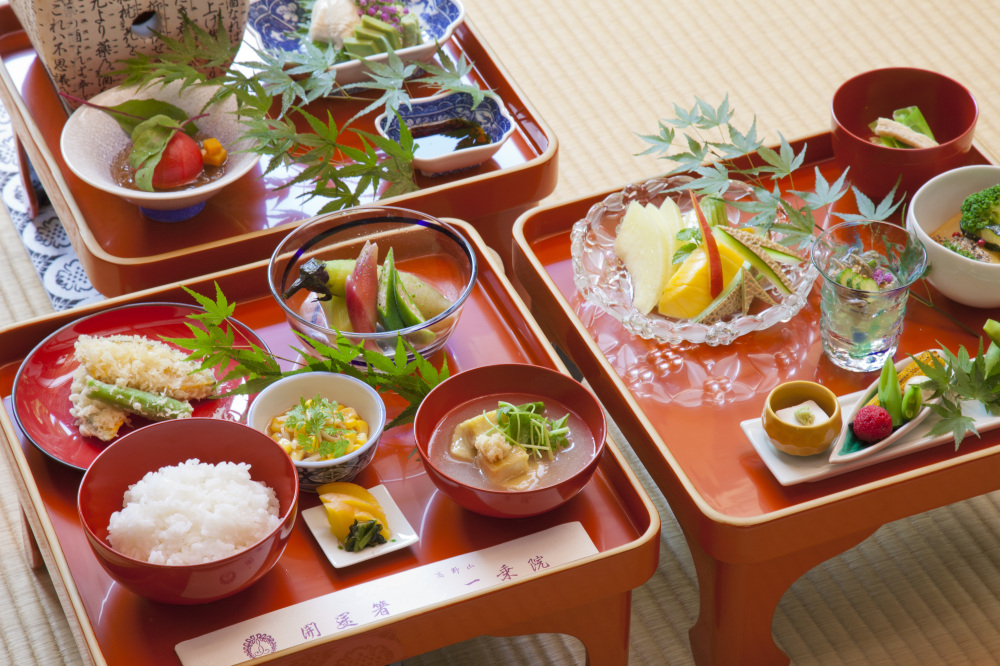All the best of Wakayama’s gourmet treats and souvenirs! An introduction to our traditional dishes and specialty products
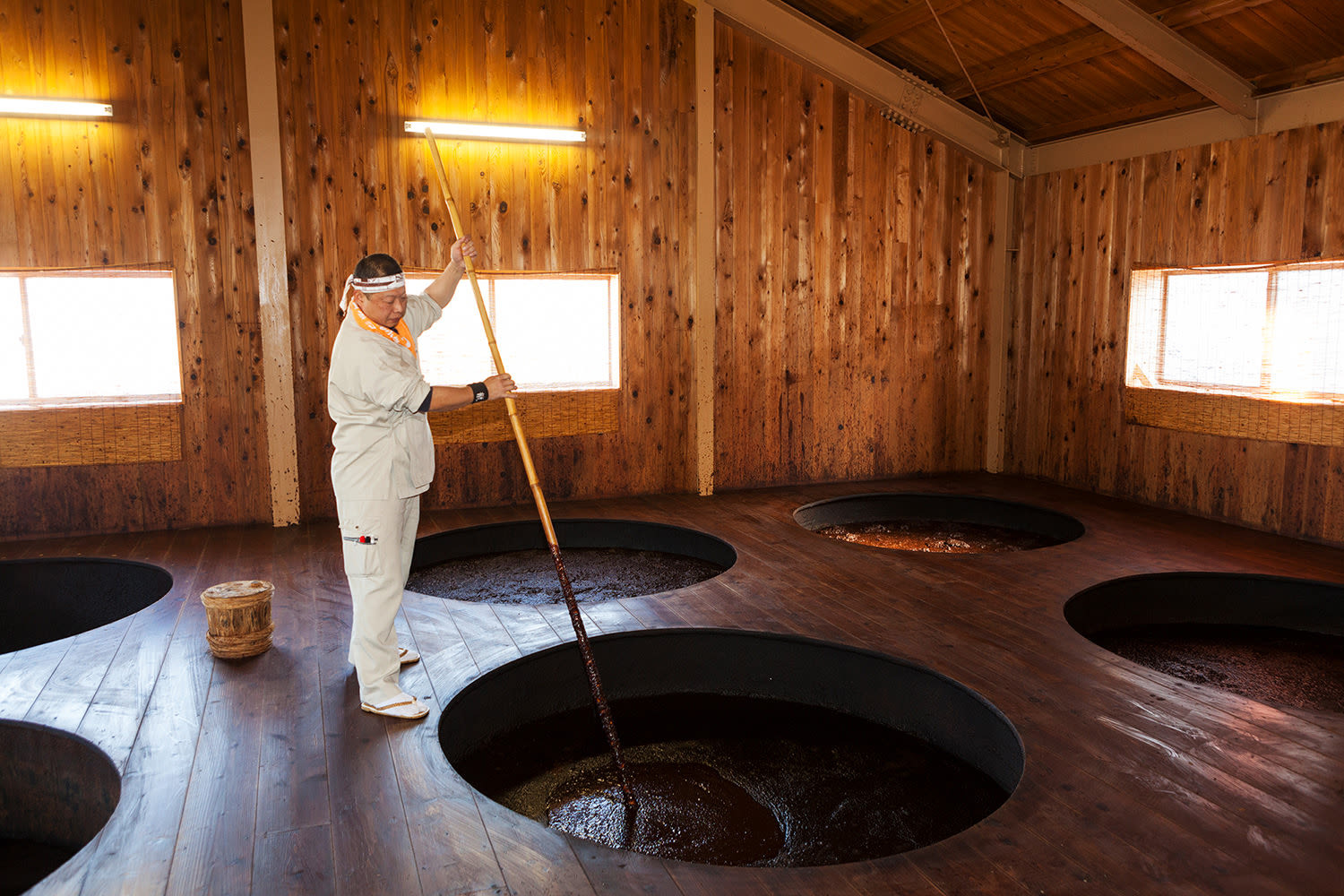
In addition to the famous produce from Wakayama such as kue (longtooth grouper), mandarin oranges, plums and whitebait, the region has a traditional cuisine and food culture that features Kinzanji miso, soy sauce, narezushi (fermented mackerel sushi wrapped in giant reed leaves) and mehari-zushi (giant rice ball wrapped in pickled takana mustard leaf). And of course, we should not forget Wakayama ramen! Here we introduce the best gourmet restaurants, shops and souvenirs of Wakayama Prefecture, all in one place!
Wakayama ramen
With a chicken or pork bone broth, Wakayama ramen comes with two types of soup: either a light, clear version called “shakomae-kei” or a rich, milky version called “ide-kei”. Back in the days when a tram system ran across Wakayama City, the tram lines were flanked by legions of ramen yatai (stalls). Such ramen stands, operating shakomae (“outside the tramcar garage”), were the originators of Wakayama ramen, thus it came to be called shakomae-kei ramen. Some have claimed that the ramen stall-lined streets of Wakayama were the birthplace of food stall centers in Japan. Since the demise of the tram network, restaurants were established throughout the city, serving every type of Wakayama ramen. Enjoy some Hayazushi, or pressed sushi with vinegared fish such as mackerel or a boiled egg with your ramen, then pay according to the honor system in most places.
Wakayama ramen restaurants
- Honke Arochi Marutaka Chuka Soba
- Starting out as a ramen stall in 1940, this is considered the home of shakomae-kei Wakayama ramen. Marutaka insists on making its own fresh noodles and is highly regarded for the aromatic soy sauce of its soy sauce and tonkotsu (pork bone) soup and the odorless, fresh taste despite a deep tonkotsu flavor. Another unique point is that can also enjoy the wintertime oden stew here.

- Tabelog
- Ide Shoten
- A leading presence of Wakayama ramen, this is the home of ide-kei ramen. Ide Shoten attracts tourists and ramen lovers from across Japan, becoming so famous that it became a brand. The soup consists of very flavorsome tonkotsu soy sauce, matching perfectly with thin noodles. This recipe was created shortly after the shop was established, and its flavor has not been altered since.

- Tabelog
- Yamatame Shokudo
- Established over 50 years ago, this restaurant has the appearance of old-fashioned public cafeteria. The hearty soup, created from slowly-simmered pork bones, has deep flavor. The medium-thickness noodles pick up the soup beautifully, which together with thick, juicy chashu pork slices, makes this a bowl to savor.

- Tabelog
- Wa Dining Seino Honten
- A famous restaurant that has been listed in the Bib-Gourmand section of the Michelin Guide. Using Ibubiton, meat from a hybrid wild boar-pig cross, the broth of the Kotteri Wakayama Ramen is reduced into a thick, savory soup. The lighter broth of the Kadocho Shoyu Takumi is also popular, so you can enjoy the ramen that best suits you.

- Tabelog
Shojin ryori (vegetarian Buddhist cuisine)
Wakayama is the location of the temple settlement of Koyasan, established by the Buddhist monk Kukai (Kobo Daishi) about 1,200 years ago. The many temples include Kongobuji, the head temple of Shingon Buddhism. Shojin ryori, the diet of monks undergoing rigorous training that forbids the eating of meat and fish, is based on the teaching that living things must not be intentionally killed. Given that broths and oils are also plant-based, this cuisine has become popular as a healthy diet in recent years and employs ingenious methods of cooking and ingredient selection. At Koyasan, there is always a queue for sesame tofu, a favorite of Kukai himself.
A shop serving shojin ryori. Take home sesame tofu as a souvenir!
- Kadohama Gomatofu Sohonpo Honten
- This is a shop that makes and sells sesame tofu. The nama goma tofu (“fresh sesame tofu”) that is to be consumed on the day it is made is so popular, it sells out by evening. It also offers sesame tofu as a longer-life product, which is a fantastic souvenir. The shop also has a restaurant section where other dishes and desserts can be ordered at the table. It offers kaiseki dining with the full array of sesame tofu dishes to savor, while fresh goma tofu can be ordered as a dessert from the café menu.
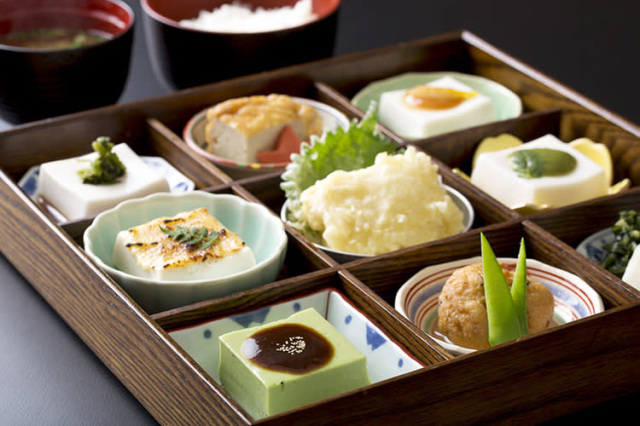
- Tabelog
- Goma Dofu Hamadaya
- A shop specializing in sesame tofu that uses 100% Yoshino Hon-kuzu (Japanese arrowroot starch) only. Its goma tofu only has three rigorously selected natural ingredients: white hulled sesame seeds, 100% Yoshino Hon-kuzu starch made from the root of wild mountain kuzu, and spring water from the Maruyama Benten Shrine, dedicated to the goddess of water. This fresh tofu requires refrigeration and cannot be stored for long. The smooth texture and rich sesame flavor set it apart. A menu is also offered in the shop which includes not just the classic wasabi-soy sauce flavor but also some unusual flavors eaten with fine wasanbon confectionary sugar.

- Tabelog
- Koyasan cuisine - Hanabishi
- This long-running restaurant adheres to the "rule of fives" of shojin ryori: the five cooking methods (raw, stewed, grilled, steamed and deep-fried), the five tastes (sweet, sour, salty, bitter and spicy-hot), and the five colors (red, yellow, green, white and black). In addition to Koyasan shojin ryori, Hanabishi offers seasonally-inspired meals and kaiseki cuisine options. Access is excellent, just 10 minutes on the bus for Okunoin from Koyasan Cable Koyasan Station, alighting at Senjuin-bashi stop. Do not forget to book ahead.

- Koyasan cuisine - Hanabishi
Umeboshi pickled plums
There is plenty of umeboshi production in Wakayama Prefecture, especially in the Minabe-Tanabe area, where the premium Nanko plum variety is grown. When the ripe plums are picked around June, umeboshi production begins not only at the plum processors but in people’s homes. The plums are dried from the start of July to the start of August. If the weather is fine, doyo, the period just before the peak of summer from about July 19 to August 7, is considered the best time to dry the plums (doyo-boshi). There are a variety of flavors, from traditional ones such as dried plums pickled only with salt or with added shiso (perilla leaf), to honey, low-salt and kelp broth. The dried plums are popular as high-end gifts.
Take home a gift of Nanko plum umeboshi or other product
- Fukuhobai
- This is an umeboshi specialty store focused on the Fukuhobai brand, which is the only dried plum that is a designated “Kishu regional specialty dried plum”. To make Fukuhobai umeboshi, ripe Nanko plums are pickled with less salt, but plenty of honey. It is a highly popular product. Other plum products are available here too, including jams and syrups. Fukuhobai products are also sold at the Sightseeing Gifts Center at Wakayama Castle and Kuroshio Market, among others.
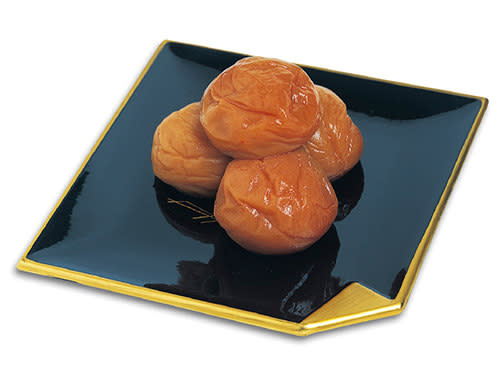
- Fukuhobai
- Umeichiban
- This is the shop selling Koganezuke, considered the original honey umeboshi. Only the finest Kishu Nanko plums, which are the best for pickling, are used. The Wakayama shop is near the castle. You can select a souvenir plum product from among a huge variety, from umeboshi to umeshu plum wine. The wholesale shop in Minabe has a café corner where you can enjoy a freshly brewed coffee with Umeichiban sweet treats.

- Umeichiban
- Fumiko Farm
- Original products made from delicious Wakayama fruit are made and sold here. One of the bestsellers is “plum glacés”, which are large Kishu Nanko plums steeped in Japanese honey for more than six months. Not a single drop of the nutrients in the plum is lost in the process. They are very easy to eat, as each plum is individually wrapped. The plum glacés have won the “Superior Taste Award” from iTQi, which is often referred to as the “Michelin Guide of food products”, for three years in a row. They are also sold aboard the Asuka II luxury cruise liner.
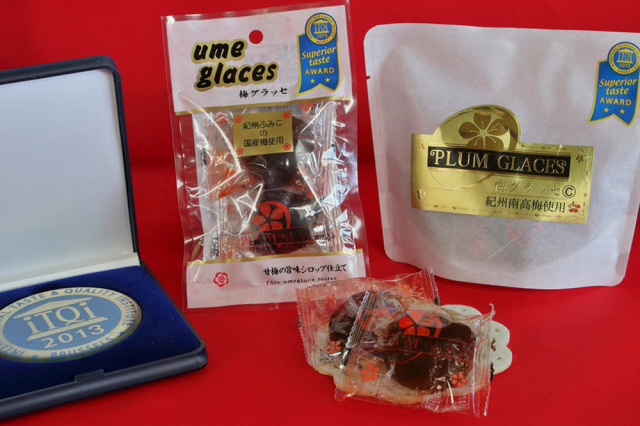
- Fumiko Farm
Column
Where there are plums, there is umeshu! We have a dazzling variety of plum wines only found in a plum-growing hotspot
In Wakayama Prefecture, various varieties are produced in addition to Nanko plums, famous as umeboshi, and it is not just the major firms but also local companies that make unique and distinctive plum wines. Umeshu aids digestion and its sourness may even help to stimulate appetite, so there is no better accompaniment to Wakayama dining. As a product that won’t spoil, it is also a great gift to buy as a souvenir of your trip.
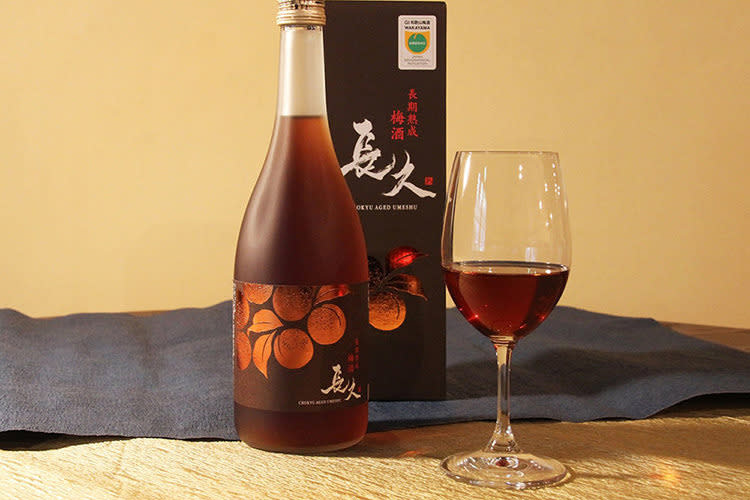
Soy sauce
They say the birthplace of soy sauce, the quintessential Japanese condiment, was Yuasa district of Wakayama Prefecture.
The history of soy sauce dates back to the Kamakura period (1185–1333), when a zen priest at Kokokuji Temple in Yura in the process of fermenting Kinzanji miso discovered that the liquid accumulating at the bottom of the barrel was a tasty seasoning. It was soy sauce. During the Edo period (around 260 years from 1603), Yuasa thrived as a soy sauce production center, boasting some 100 breweries. Soy sauce continues to be made here using the traditional method. The part of Yuasa filled with old breweries and other nostalgic structures is designated as an Important Preservation District for Groups of Traditional Buildings by the Japanese government. The yeasts that have settled in the old storehouses play a role in the fermentation of delicious soy sauce. The district is full of places selling soy sauce products and sites to see and experience the way soy sauce is made, truly immersing visitors in the history of soy sauce brewing.
Where to find soy sauce delights
- Yuasa Soy Sauce
- A rare brewery in Yuasa dedicated since long ago to natural fermentation using wooden barrels. Free factory tours are available, allowing observation of soy sauce making. You can also try your hand at making soy sauce, which you will then be able to take home with you. Why not enjoy a soy sauce-flavored ice cream at the attached Kura Café while you’re here? The shop is the perfect place to find a gift, selling soy sauce, Kinzanji miso and many other products.

- View more
- Kadocho
- The oldest soy sauce brewery in Yuasa was established in 1841. In addition to their proud handmade soy sauce, an incredible product here is Nigori Bishio (“cloudy soy sauce”), obtained exclusively from the extract resulting from the breakdown of ingredients by koji (fermentation starter), without pressing, heating or any other human intervention. Around the corner are the Shokuningura soy sauce museum and the Kadocho soy sauce museum, great places to encounter the traditions of Yuasa soy sauce.

- View more
- Kadoya Shokudo
- A minute's walk from Yuasa Station, this venerable diner is run by the third-generation owner. The most famous menu item is the two types of whitebait rice bowl served raw and boiled. An original soy sauce was developed to serve with whitebait on rice as a way of promoting Yuasa, and it proved wildly popular. The special blend incorporates Arida mandarin orange blossom honey as well as Kishu umeboshi pickled plum, perfectly complementing the sweetness of the whitebait. Other excellent options include the sashimi and udon dishes.

- Tabelog
- Mahalo Yuasa - Baumkuchen specialist
- This baumkuchen baker has a branch in the parking lot of a soy sauce brewery. Mahalo’s claim to fame is the moist and fluffy “Fresh Baumkuchen”, an exclusive baked offering that contains three times the water typically used in baumkuchen. The “Yuasa soy sauce baum” is an aromatic Japanese-style baumkuchen that contains Yuasa Soy Sauce’s Kiippon Kuromame soy sauce, imparting an instant sweet and salty flavor to the whole palate. The original Mahalo restaurant is found in Arida City, where you can eat on the premises.
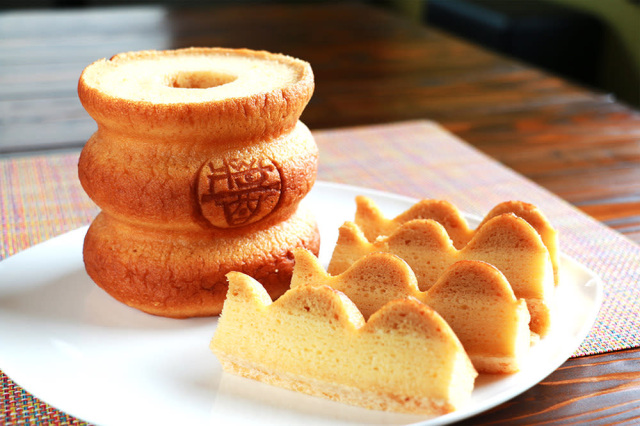
- Tabelog
Kinzanji miso
A type of name-miso (edible miso) as opposed to a seasoning, Kinzanji miso is not just a rice topping, it also makes a fabulous snack with a drink. It was a food brought back from China by Buddhist monk Kakushin (known posthumously as Hotto Kokushi) during the Kamakura period, and it continued to be made in what is today Yuasa because the water here suited the production of miso. Kinzanji miso is made by hand to this day. It is a preserved food that contains wheat as well as vegetables such as eggplant, originally as a way to be able to keep eating summer vegetables during the winter. Kinzanji miso is believed to be the origin of soy sauce.
Where can I buy Kinzanji miso?
- Koyasan Miso Honpo Mizuki
- Founded in 1757, this is the only miso shop in Koyasan. Miso used to make soup in the modern era in the Japanese traditional flavor, and aji-miso, which comes in shiso (perilla leaf), walnut, plum and peanut flavors, are hit products among all generations. Other gems that customers are always coming back for more of include the okazu-miso (eaten as a quick and easy side dish) and Kinzanji miso. In the takeout corner of the shop, open on weekends and public holidays only, you will find snacks like dengaku (grilled tofu dressed with sweet miso paste) and grilled rice balls basted with miso paste. Do not leave it too late, as they tend to sell out not long after midday.

- Koyasan Miso Honpo Mizuki
- Kubo Miso Honpo
- The “Kishu Kinzanji miso” sold here contains 100% Japanese ingredients only, with particular focus on using vegetables from the Kinokawa River basin (white melon, eggplant, ginger, shiso). These ingredients are then pickled in salt from the Goto-nada Sea off Kyushu, sugar and syrup to produce an aromatic, smooth flavor. In addition to regular Kinzanji miso, there are also more mellow, lightly salted versions on offer, so you can choose the one to your taste. They also produce for sale white miso and awase-miso (mixed miso).

- Kubo Miso Honpo
- Kokoku-ji Temple
- Said to the birthplace of Kinzanji miso and soy sauce in Japan, shops at Kokokuji Temple sell Kinzanji miso and handmade soy sauce to this day. You can even purchase Kinzanji miso bearing the name of the temple. This is a property boasting plenty of sights, such as the giant 2-meter-plus red face of the mythical tengu (long-nosed mountain spirit) and the Tengu Meikon Stone, said to grant wishes when rubbed.

- View more
- Marushin Honke
- Soy sauce and miso hold an unbreakable bond, given that soy sauce first emerged as a byproduct of the Kinzanji miso production process. It is also the reason that Yuasa, home of soy sauce, has a good contingent of Kinzanji miso shops. Marushin Honke, founded in 1881, offers all sorts of miso, from the traditional Kinzanji miso beloved of customers since the beginning to versions full of vegetables, as well as plum, yuzu, wasabi and garlic flavors.
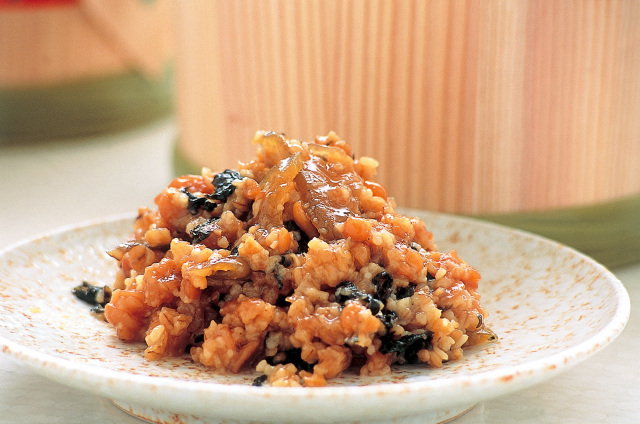
- Marushin Honke
Mehari-zushi
Mehari-zushi is said to have taken its name from the fact that it is so big and you have to open your mouth so wide to eat it, your eyes open. It is the taste of home for people here because forestry workers of the Kumano region in southern Wakayama Prefecture were in the habit of filling their bento box with sushi the size of a child’s head. Traditionally, mehari-zushi was a simple affair, consisting of a shaped rice ball wrapped in the salt-pickled takana mustard leaf. In recent years, however, people have started to stuff different ingredients into the rice ball too. You can enjoy a wide variety of flavorings, depending on the restaurant.
Find where to buy and eat mehari-zushi
- Sohonke Mehariya Shingu Honten
- This was the first restaurant to provide visitors with a product called “mehari-zushi”, which had always been made at home. All sushi is made fresh to order, the warm white rice and sauce of the pickled takana mustard leaf blending deliciously, making it hard to stop ordering more. Top picks on the menu here are the teishoku sets that pair the mehari-zushi with tonjiru (pork miso soup), tororo (grated raw yam) and more, not to mention the “Mehari Tenmusu”, which finds prawn tempura inside the sushi. Takeout options are available, as well as souvenirs.

- Tabelog
- Mehari Honpo Sangenjaya Kouriki-an
- At this restaurant operating out of a kominka (traditional house), you can eat mehari-zushi or tempura with your soba noodles. Apart from mehari-zushi the size of a regular fist, they also have mehari-ten (prawn tempura that is rolled in rice and wrapped in pickled takana mustard leaves). It is eaten with a drizzle of soy sauce. Another popular order is the “Isoma-don”, featuring whitebait and rock seaweed on rice.
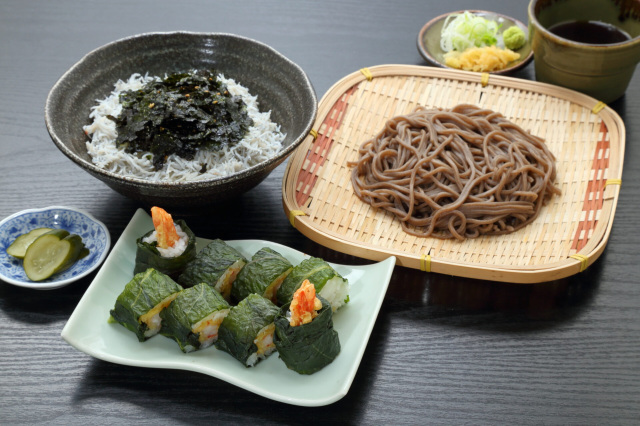
- Tabelog
- Mehari Zushi Nidaime
- A restaurant famous for mehari-zushi, tuna from Katsuura and kushikatsu (deep-fried skewers). This is local institution where most diners take up a seat at the counter. The “Nidaime Teishoku” is a delight for the hungry, consisting of mehari-zushi, raw maguro tuna on rice and kushikatsu. Mehari-zushi can also be ordered for takeout in six different varieties including the standard takana mustard leaf, rare tuna cutlet and plum. A great aspect of this restaurant is the easy access, at just two minutes’ walk from JR Kii-Katsuura Station.

- Tabelog
Kaki-no-ha-zushi
Even though Wakayama Prefecture is a land of plentiful seafood, in olden times the upper reaches of the Kinokawa River were a long way from the sea and fresh fish was hard to come by. This led to the invention of kaki-no-ha-zushi, a form of pressed sushi wrapped in a local specialty persimmon leaves, enclosing thinly sliced salted mackerel on a bite-sized piece of vinegared rice. Various varieties of persimmon are cultivated in the region, but due to their fragrance, it is the leaves of the shibugaki (astringent persimmon) that are best for kaki-no-ha-zushi. This type of sushi also keeps well and is now eaten across the country and has expanded from mackerel to other fillings such as salmon.
Where to buy kaki-no-ha-zushi
- Kuwaraku
- The kaki-no-ha-zushi from specialist Kuwaraku is preservative-free. This is a popular restaurant which draws in fans from far and wide. It offers three types of sushi: mackerel, salmon and shiitake mushroom, in packages of nine mackerel sushi, or nine sushi of three different fillings, for example. Once sold out, there is no more for the day, so it is best to ring and check ahead of time before making an order (salmon and shiitake must be reserved at least a day ahead).
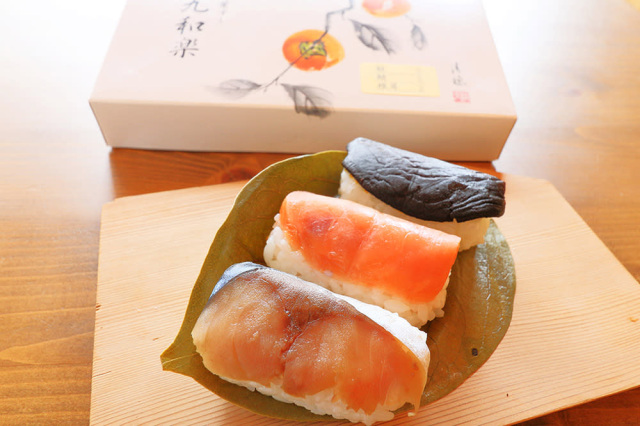
- Tabelog
- Fukumoto Shoten
- This shop prides itself on making kaki-no-ha-zushi by hand, without the aid of any machine. Their sushi can be found at roadside stations as well as here at the shop. The persimmon leaves are handwashed one by one, and all the sushi is hand-pressed. Absolutely no preservatives or additives are used. Fukumoto’s kaki-no-ha-zushi has many fans, thanks to the fluffy vinegared rice and the perfectly plump mackerel.

- Tabelog
- Katsuragi Drive-in – Kinokawa Sushi Honpo
- Located at the foot of Koyasan, in Katsuragi Town, which is also on a pilgrimage route, this shop sells kaki-no-ha-zushi and fresh vegetables from local farmers. The kaki-no-ha-zushi comes in three flavors: mackerel, salmon and shiitake, and the sushi has a nostalgic old-fashioned taste with a refreshing saltiness and a hint of vinegar. They also offer standard Koyasan souvenirs such as sesame tofu, and many tourists and locals seeking the fresh vegetables visit on weekends.
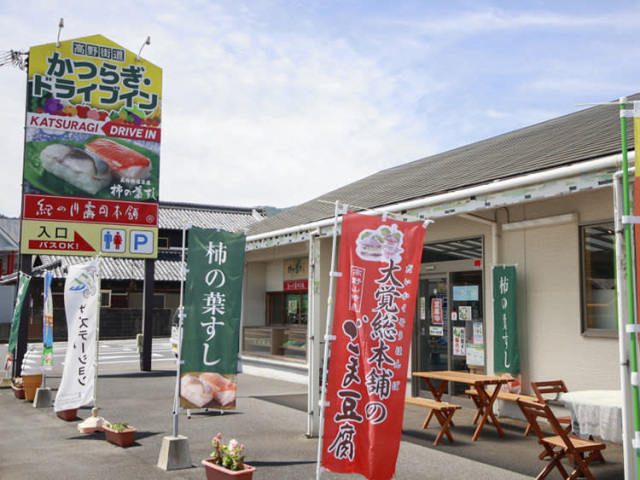
- Katsuragi Drive-in – Kinokawa Sushi Honpo
Bozushi (narezushi, sugata zushi)
Wakayama Prefecture has a great variety of sushi, not least of which is narezushi, a traditional dish of the region and one of Japan’s top three narezushi. Narezushi is made by placing salted mackerel on vinegared rice, wrapping it in giant reed leaves, packing it in a tub, and placing a weight on top. The sushi is finished by lactic acid fermentation of only the fish, salt and rice, creating a distinctive aroma. Locals consider it a “grown-up” taste. Hayazushi, or pressed sushi with vinegared fish such as mackerel, which uses vinegared rice, is easy even for first-timers to eat, and many restaurants serve it with Wakayama ramen. Another famous sushi is sugata zushi made using whole sanma (Pacific saury). This is another narezushi variety, with some rare sugata zushi products preserved up to 30 years.
Where to eat bozushi (narezushi, sugata zushi)
- Yasuke Zushi
- A venerable establishment founded in 1882 which has never changed the way it prepares sushi. The famous narezushi sees queues out the door at the end of the year, with its slightly sweet and delectable aftertaste. The hayazushi made with vinegared mackerel also goes down easily and is very popular. Also on offer are the sanma zushi made with yuzu vinegar, the beautiful pink kodaizushi (small snapper sushi), and the ayu-kanro (nectar of sweetfish) sugata zushi with whole fish.

- Tabelog
- Jofuku Zushi Ekimae Ten
- Just outside JR Shingu Station is a sushi shop offering sanma sugata zushi. Its method is very particular: to ensure the choicest part of the saury can be eaten, a whole fish is cut along the backbone, then pickled in vinegar. Most of the saury are caught off the Kumano coast and they are perfect for sushi, firm of flesh and with just the right level of fat. The retention of the whole head means it delightfully delivers the full depth of flavor. Only the finest vinegar is used to pickle the fish for two months, boosting the umami and depth of flavor.
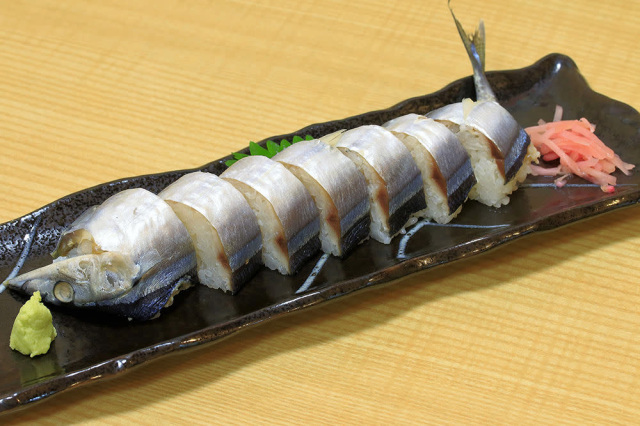
- Tabelog
- Tohojaya
- A restaurant so famous, it brings in customers from across the nation, in search of sanma narezushi. The narezushi products here are fermented for anywhere from a few weeks to 30 years, by which time they are well liquified. They say thirty-year narezushi has a flavor like cheese or yoghurt. The narezushi also comes in ayu sweetfish, mackerel, cherry salmon and other varieties. This is a Japanese restaurant reputed for an extensive and unfailingly delicious menu, where you can even sample grilled eel, whale and dolphin meat dishes.

- View more
- Susami Shokudo
- Serving teishoku set meals by day, this establishment turns izakaya (dining bar) at night, when it is populated by locals. The daily special teishoku and the inobuta-don (pork from hybrid wild boar-pigs on rice) are popular items, but the sanma zushi handmade by the okami-san (female manager) is famous too. It is a gorgeous balance of refreshing yuzu-scented vinegared rice and perfectly juicy sanma, with blue shiso sandwiched in-between.
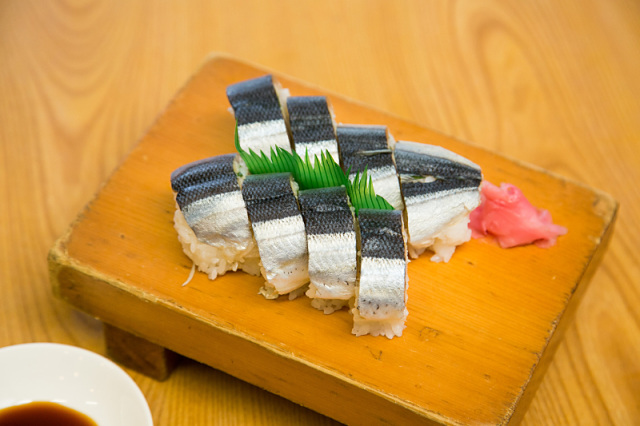
- Tabelog
Chagayu
In Wakayama, okayu (rice porridge) consists of rice steamed with hojicha, a roasted green tea, called “chagayu”. Eaten regularly in all families, its nickname is “okaisan”, but every home and restaurant makes a version with its own special touches. In winter it will often be served warm and in summer, it might be served cold. It matches perfectly with umeboshi or pickles. Chagayu is also recommended with local whitebait, dried foods or Kinzanji miso. It is distinguished by its fragrance and silky texture. There is something nostalgic about its simple flavors.
Where to find chagayu
- Jun Kissa Lierre
- The “Chagayu teishoku” set meals are offered on the morning menu from opening time at 10 am until 2 pm. A sense of tradition is evident. A very generous portion of chagayu, served in small pots, comes with six kinds of side dish, as well as pickles and umeboshi. You may also enjoy a coffee or juice of Wakayama fruit with your freshly baked, crunchy waffles as you gaze out to the Japanese garden from this 130-year-old kominka house.

- Tabelog
- Kaachan no Mise
- A restaurant run by local kaachan (mothers) that offers local dishes and regional products. The "Chagayu teishoku" comes with three side dishes and pickles, providing a highly satisfying meal for lunch. Meanwhile, there is also the "Kaachan teishoku", which increases the number of side dishes to five, mehari-zushi, and sanma zushi in winter. This restaurant also has yomogi mochi (Japanese mugwort rice cake), tadanori mochi, famous locally and reputed for being soft and delicious.
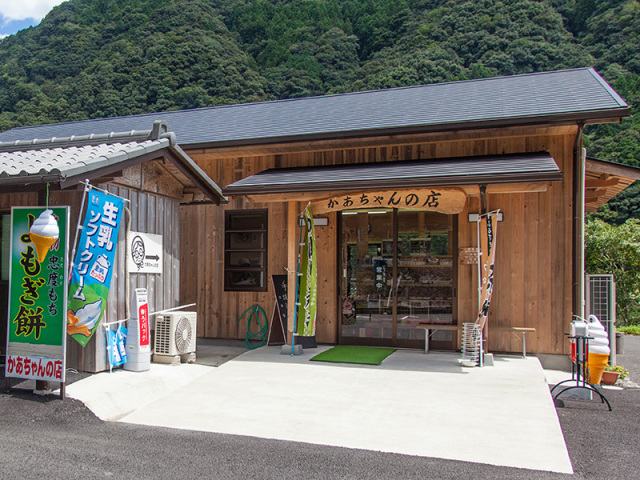
- View more
- Chagayu tea packs
- By using teabags specially designed for making chagayu, which are sold at local roadside stations and supermarkets, you can easily make yourself a bowl of steaming tea-infused rice porridge at home. Every household in the district has its own spin on chagayu, adding ingredients such as sweet potato, taro, broad beans or rice cakes. It is a local dish that lends itself to creativity. Typically made by cooking the rice from scratch, it can also be created by pouring the tea over cold cooked white rice or chirashizushi (sushi rice with toppings). Of course, these tea packs can also be brewed as normal hojicha tea.
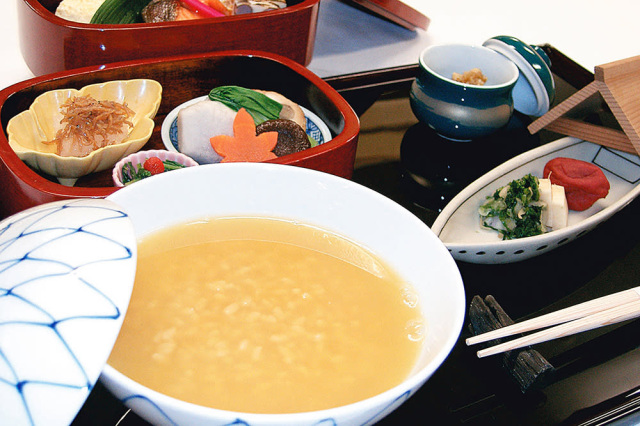
Wakayama fruit
In Wakayama Prefecture, the “fruit kingdom”, every season has its own fresh fruit to savor, from the famous Arida mandarin orange and the jabara citrus variety discovered in the village of Kitayama to strawberries, peaches, plums, persimmons and figs. Of course, you can buy fruit directly from a store to take home as a memento of your travels, but we also recommend picking fruit at a farm or tasting parfaits and sweets made with seasonal fruits here in the region. Come and experience the season here in Wakayama!
Make the most of the fruit in Wakayama
- Ito Noen
- Ito Noen, in Arida, is a specialist farm dedicated to Arida mandarin oranges, which are famous all over Japan, and other citrus products. The farm hosts a luxe mandarin picking event in late October every year called “Mikanping”. Visitors can pick oranges for 90 minutes. Naturally all fruit picked can be taken home, but visitors are also welcomed with all manner of offerings at the mountain top. For more details, please enquire directly to the Mikannoki shop.
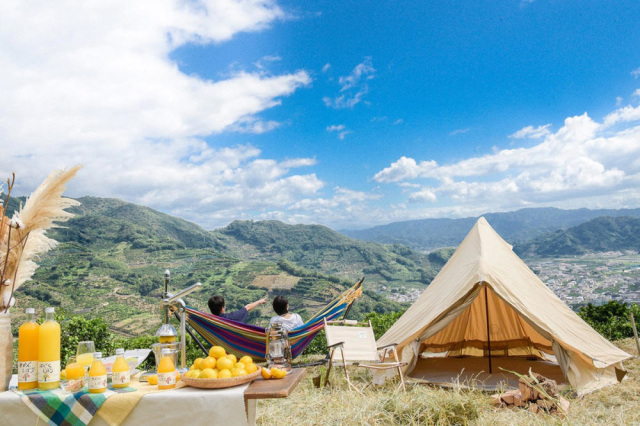
- Mikanping
- Arida Kyoho-grape Village
- Arida Kyoho-grape Village, located in a mountain valley halfway up the Arida River, is one of the biggest tourist farms of the Kansai region. Boasting an expansive 40ha or so, the Kyoho-grape Village is a grouping of several farms, each with its own farmer and various different fruit crops. Half of the land is dedicated to grapes. The key variety here, as the name of the farm suggests, is Kyoho, but the farmers also grow nashi pears, persimmons and more. Here you can enjoy fruit picking or buy fruit at the farmgate price.
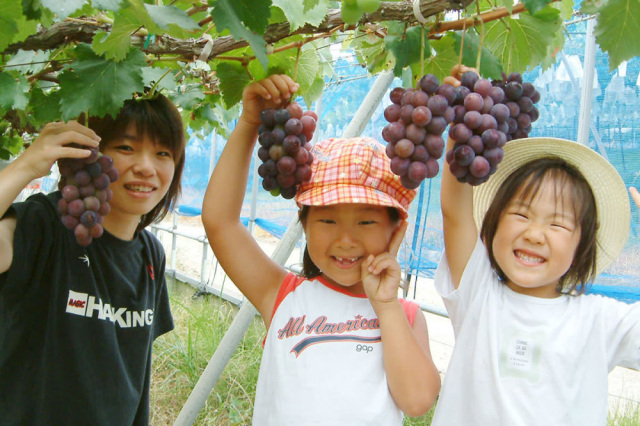
- Arida Kyoho-grape Village
- Kannonyama Fruit Parlour
- Kannonyama Fruit Parlour, which has opened branches in Kobe, Ginza and Omotesando (Tokyo), has its main store in Wakayama Prefecture. Here you can partake in the vividly-colored parfaits, fruit sandwiches, drinks and shakes made with the fresh Wakayama fruit of the season. On weekdays afternoon tea sets are limited in number, so do make an online reservation ahead of time. You can also buy gifts at the adjoining Kannonyama Fruit Garden shop.
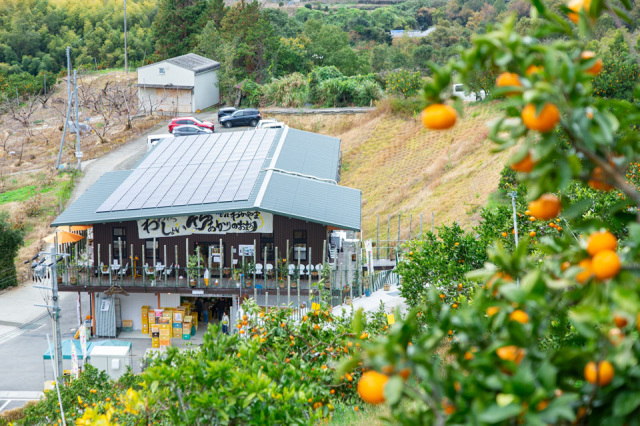
- Kannonyama Fruit Parlour
Kue nabe (longtooth grouper hotpot)
Kue (longtooth grouper), is a famous winter season fish of Wakayama, but so few are caught that it is known as the "phantom fish". Up to a meter in length and weighing in at over 40 kg, the flesh is succulent with excellent fat content and unique umami flavor so delicious, it compares with the sought-after fugu pufferfish. The local fisherfolk say that once you try kue, you can’t eat anything else. So while you are here, you had better try some of this fish that rarely finds its way to the general market.
Tuna
While tuna is landed year-round in Wakayama Prefecture, it is said to be at its best in winter. In fact, Nachi-Katsuura lands the highest volume of fresh tuna by longline fishing of any port in Japan. Fresh tuna has a tender, springy texture and deep flavor unattainable in the frozen product. Take a guided tour of the Katsuura Regional Wholesale Market to observe live auctions. You could also try your hand at creating your own original tuna can at the portside processing facility, “Maguro Taiken CAN”.
Whale
Taiji Town is believed to be the birthplace of traditional Japanese whaling. To this day, whales are caught during a set period of the year up to a quota. This history and culture of whaling is registered as a Japan Heritage and Taiji is known as “the town that lives with whales”. Whale meat from the scientific whaling program of the Japanese government is also shipped here, so this is a place where you can try this precious product. Fresh whale meat is odorless and is most popular served as sashimi. The tail meat from the dorsal fin to the tail is especially delicious. Apart from sashimi, there are the classic ways of eating whale such as tatsuta-age (meat pieces marinated in soy sauce, rolled in potato starch and deep-fried) and whale bacon, which involves salting and smoking the meat found between the lower jaw and the belly, but it can be enjoyed in a variety of other ways, such as harihari hotpot made with mizuna leaf, sushi, yukke (dressed raw meat) and pasta.
Whitebait
Whitebait is fished year-round, but it is at its best in spring and autumn. Fishing takes place in waters of the Kii Channel and off the Shingu coast. Due to the numerous whitebait processors near the Wakayama ports where the fish are landed, they can be processed straight after coming ashore. The short time between landing and processing means that the whitebait are soft, plump and delicious. In addition, there are many shops that offer not only kamaage (blanched) but also fresh whitebait, so you can taste the fish in raw form. Look for restaurants with the "shirasu bowl" sign.
Tachiuo cutlass fish
Wakayama Prefecture is no. 1 in Japan for tachiuo (cutlass fish) by volume caught. Much of the fishing takes place in the Kii Channel and it is particularly well-known from Minoshima fishing port in Arida City, where the fish is a familiar presence and called “taccho”. Fresh cutlass fish is succulent with fine flavor, delicious as sashimi or any cooking method, be it grilled, deep-fried or other. Other highly regarded cutlass fish dishes are honeku (fried fishcakes) and the tachiuo ju (basted and grilled on rice as a substitute for eel). In a national contest, the “Taccho Honeku Rice Bowl” received huge plaudits, winning gold in the local rice bowl category.
Ise-ebi spiny lobster
Wakayama Prefecture has one of the biggest hauls of ise-ebi (spiny lobster) in Japan, with most caught off the Kinan region in the south, a highly indented coastline. The peak season is from September to April, spiny lobster being a premium ingredient that represents the winter season. Wild spiny lobster, which grows around the rocky coast, is firm of flesh and plump in texture. With its rich flavor, spiny lobster is delicious regardless of cooking method, be it simply grilled with salt, in miso soup, or as tempura or sashimi. Susami Town is home to Aquarium of Crab and Shrimp, the world’s only crustacean aquarium, which adjoins a roadside station, so you can pop by while you take a break from your roadtrip.
Kumano beef
Originally a breed raised in the Kumano region for generations, Kumano beef is the result of improvement through breeding and is now a high-quality branded Wagyu beef specialty of Wakayama Prefecture. The meat is fine and tender. It has a sweet taste, the flavor of the meat itself is outstanding, and the aroma when grilled is superb. Please take the opportunity when you visit Wakayama Prefecture to try the rare "Kumano beef", which tends only to be found in Wakayama Prefecture and the Kansai region.
Gibier (wild game)
Venison and boar have long been eaten in highly-forested Wakayama Prefecture, but amid a game meat boom in recent years, they have become known under the title of “Wakayama gibier”. Every winter, more than 80 restaurants across the prefecture take part in the “Wakayama Gibier Festa”, while an initiative is underway in schools to integrate game meats into food education. It is part of the Wakayama gourmet scene that is making waves.
The Gibier Burger, made with plenty of game meat, is very popular. Boar meat patties go down easily with everyone, without a hint of gaminess. This is a product that gives you a taste of a land with wilderness at every turn.
Wrap-up of Wakayama’s top gourmet treats and souvenirs
There are so many gourmet treats produced from the abundant soils and seas of Wakayama Prefecture.
Of course you can come here to eat your heart out, but why not take home some Wakayama goodies as a souvenir for yourself or friends and family?
